Koryu Sparring
Choose Your Sacrifice
Part 4 of a 5-Part HEMA and Koryu FAQ Series
By Paul 'Batman' O'Brien
B.A., N.C.E.H.S., Dip. Acu., Adv. Dip. OBB, Cert Clin. Med. Pn1, PN-SSR, PN-NCA, M.AFPA, M.ETCMA, M.C.Th.A.
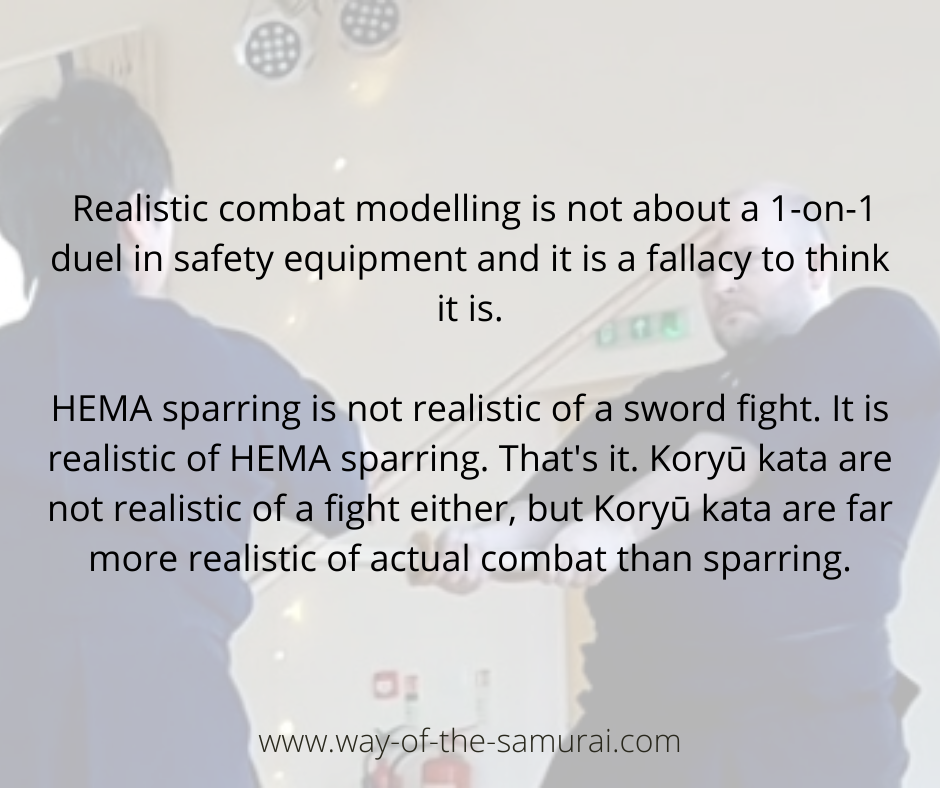
Koryu Sparring- the single most asked question I see from HEMA enthusiasts, and those that don't know much about Koryu, but think it is some sort of feudal MMA. In this article, part 4 of my 5-part FAQ for the HEMA practitioner I am going to explain why koryu sparring. What it is...and what it isn't.
“We spar in HEMA, I want to study a Koryū that does full contact weapons sparring"
"Which Koryū do full sharps sparring”
“How do you know what works if you don’t spar?”
"Is it possible to spar in Iaido?"
etc.
Sparring is of limited use within the Koryū I practice and offers little practical value.
Firstly, there is a mistaken assumption among many HEMA enthusiasts as to the nature of Koryū. Most of the styles I practice at any rate are not dueling systems. They were not designed and developed as dueling systems.
The style of Iai I practice was designed to murder people who didn't know they were in a fight. I have no need to "pressure test" these techniques to see if they work. It is self-evident that they work. Will a 3-foot razor blade slice a neck or penetrate a torso enough to kill? Yes. Obviously. If I want to, I can find video footage online of a Japanese politician being murdered by an "iai" technique. Every Iai technique will work on an unsuspecting opponent. There is no need to pressure test the patently obvious.
Secondly, those Koryū more of a dueling nature are often teaching strategic principles and army movements through combat. It's not actually about what the two people are doing but why, as we saw in the discussion on techniques. Again...within one of the more "dueling" systems I study it is self evident that the techniques work. Every technique in that ryū will work on an opponent I have deliberately hit with my car on their way to the duel. That is part of the mindset of the ryū. It's very smart. Very practical.
And let's assume you don't follow the underlying principles and just conduct a duel based on those forms. It's not koryu sparring. The first cut kills. It's not a back and forth, tapping here smacking there. It's not a sport. It's one cut. The back and forth you see in movies and HEMA or Kendo is not reality. It's artifice. Real life is one cut and someone is dead.
Unlike HEMA, Koryū don't need to pressure test this - it is self evident. We don't need to experiment in unrealistic contests because we have fact evidence. We have an unbroken history of people using these methods. The winners passed on what won through direct and continuous transmission.
There is no need for Koryu Sparring. It is already "Battle Tested". In actual battles.
Actual Battles
Let's start with one of the schools of Koryu Iai I practice...
We know that Toyotomi Hideyoshi, the military ruler of Japan from 1582-1598 praised Hayashizaki Jinsuke Shigenobu as a "swordsman without equal" having seen his technique firsthand. We know the second headmaster of the style was a vassal of the daimyō of Okayama, Ikeda Sanzaemon no Jō Terumasa and performed in front of the shogun and that his children, inheritors of the style would later serve the 8th Tokugawa shogun, Tokugawa Yoshimune.
The 3rd headmaster of Musō Jikiden Eishin-ryū Iai, Nagano Muraku Nyūdō Kinrosai (B.Late 1500’s) served as a samurai under the daimyō of Hikone (Shiga Prefecture), and the 5th headmaster, Arkiawa Shozaemon Munetsugu (B.Late 1500’s) served as a vassal under Toyotomi Hidesyoshi. The 9th Headmaster, Haashi Rokudayu Morimasa (1661-1732), was a high ranked samurai, the quartermaster for the Tosa Daimyō and wrote the first genealogy of the Musō Jikiden Eishin-ryū. In fact, we know many headmasters of the ryū as they served the Tokugawa shogunate with distinction, until the Meiji Restoration of 1867.
In addition within the oral history of the MJER there are numerous accounts of the techniques within the style being used in even earlier historical accounts. For instance, in a Sengoku period text, Yamamoto Kansuke writes about the technique of 連達 Tsuredachi in the MJER Okuiai - some of the oldest techniques in MJER school developed originally by Hayashizaki Jinsuke Shigenobu back in the late 1500's and several of these techniques and elements of the Eishin-ryu can be traced back to the early Muromachi period.
The technique of 抜打 Nukiuchi is depicted nearly exactly as performed today in the 14th Century "Illustrated Biography of Saint Ippen". The technique of 稲妻 Inazuma and月影 Tsukikagei are described in detail in the "Tale of Minamoto Yoshitsune", likely written at the start of the Muromachi period (1392-1573). Also during the 14th Century we find the "The Vendetta of the Sogo Brothers", which describes the technique 霞 Kasumi. And even a description of 八重垣 Yaegaki appears in "The Hundred War Songs of Uesugi Kenshin"
And of course we know that even in relatively recent times the methods of the ryu have been used in combat. Several students of the 16th headmaster, Goto Magobei Masasuke (D. 1898), fought for the emperor during the 1897 coup staged by the lords of Tosa, Choshu and Satsuma, successfully restoring power to the emperor in Kyoto.
The great unifier of the style, Oe Masaji, who developed the MJER school into what it is today fought and used the techniques of the ryū in combat during the Battle of Toba–Fushimi during the Boshin War, securing the emperor’s position. Several of his fellow Tosa Samurai were involved in the Sakai Incident. Oe Sensei's daughter even mentions it briefly in her biography:
"Father and this friend had been disciples of the same warrior-monk and had fought side by side in the last pitched battles of the Edo period."
- Kiyooka, Roy; Mothertalk, NeWest Publishers Limited, 1997, pg. 44
Further, when examining the actual techniques themselves it is easy to see the realistic nature of the art in terms of feudal Japanese battle, something Oe Sensei arduously retained -
"Master Oh-e also experienced real battle (a political war at Hamaguri Gomon) The Clam Gate War in Kyoto at the end of the Tokugawa era. This is why his technique seemed so realistic".
- Iwata, Norikazu. Kiso Iai Kozo, trans Colin Hyakutake-Watkin - http://www.hyoho.com/Kiso1.html (retrieved 14/5/17)
Of course, this is the same in any Koryū. In Hyoho Niten Ichi Ryu, the students equipped with the kuden can point to a number of battles Musashi fought and describe the technique in the curriculum used to defeat his opponent. In Kagéryu we know the founder Yamamoto Hisaya Masakatsu of Akizuki Han fought in the advance guard of Otomo Bungo. The Tachibana clan still preserve the history, documents and treasures associated with the style's military history.
Realism in Koryu Sparring?
Finally, Koryū kata are far more realistic than sparring.
Sparring presumes and assumes a whole load of stuff that isn't a real sword fight. Target areas, safety equipment, armour, weapons, terrain, and worse 1-on-1 agreed upon combat. How often do you get jumped in HEMA? Like, on the way to the event? How often do you cover the ground in debris? How often are you attacked from behind, or by multiple opponents. How often do you get attacked when you're asleep, or at home relaxing? Do you test HEMA in a situation where you have had a few and you are leaving the club, when someone slices your kidneys in the hustle and bustle of closing time crowds? When do you pop out an eyeball in HEMA, where do you deal with a sprain or a broken leg, do you start your fight on your hands and knees in the mud with an opponent bearing down? Where does Fiore or Lichtenstein come in? Koryū kata allows for all that and more. Realistic combat modelling is not about a 1-on-1 duel in safety equipment and it is a fallacy to think it is.
HEMA sparring is not realistic of a sword fight. It is realistic of HEMA sparring. That's it. Koryū kata are not realistic of a fight. The only thing that is realistic of a fight is a fight. However, Koryū kata facilitate better combat modelling than sparring. The US Marines know this. The US Navy Seals know this. Their hand-to-hand combat program is taught through modelling and kata. Not free sparring. How do you spar a gouged out eye or ruptured eardrum? No one trains soldiers by having them load live rounds and spar shoot at each other either.
Within the Koryū, as military arts predominantly concerned with real life violence, (read asocial violence). We use the same equipment as was used back then, not a half measure. Musashi used bokken (wooden swords) to club his opponents to death. He used a 6 foot staff on the battlefield. We use the same wood, made to the same dimensions. Muso Gunnosuke used a wooden staff to defeat many warriors. We use the same weapon, made of the same material, to the same dimensions. Not a “safe version”, not a “training version”, the actual weapons without modification for safety.
“Combative training must rely on some form of pattern drill, or the mock weapons are supplemented with so much safety gear that the students no longer behave like people in a real fight.”
- Amdur, Ellis. Being Old School: An Interview with Ellis Amdur on the Classical Martial Arts of Japan. https://freelanceacademypress.wordpress.com/2014/11/06/going-old-school-classical-martial-arts/
Within HEMA this reality is acknowledged. Look at Quarterstaff fighting - you can’t use an actual quarterstaff in full contact, full speed sparring under HEMA rules, because it would result in catastrophic injury. Koryū kata allows us to use the actual weapons without modifications. In addition they allow us to train against an unarmoured, or authentically armoured opponent (not modern safety gear) at full speed, with full power and within a far greater realm of possibility than within the limitation of a “duel”.
Sparring these days is primarily a contest of ego and validation. I can do X better or faster than you. Personally, I have no interest in sport. I practice combat systems grounded in modelling specific neurophysiological patterns. Sparring has no value in that. Which is likely why many Koryū don't waste time on it.
Nor are kata the static regimented sequences of robot performances often made out to be by those who have never gotten past the beginners stage. You may learn a series of steps at the start...but it doesn't stay like that. The timing can be completely different, rapidly moving from fast rapid attacks...or moments where movement is cautious, patient...the attacks move from being something as direct as an overhead cut to a quicker direct off the shoulder cut, or a centre taking technique to deliver a thrust...and then...sometimes they attack with something utterly different. If you become complacent, anticipate the attack...the senior just changes the attack and timing.
Koryū paired kata teaches technique, how and when to use it without the limitations, unreality and compromise of 'sparring'. In my experience Koryū kata is far more intense, realistic and live than sparring. Koryu Sparring just let's people do what they like without significant consequence. Koryū kata mostly uses no safety equipment, uses the actual real weapons and has potential for nearly infinite live variation, (timing, distance, target, speed, pressure etc), and has real and immediate consequences as a result. All too often in both HEMA sparring and others people become overly reliant on the safety equipment, the padded weapons, the lack of risk and it changes their attitude. They take risks, putting them in compromising positions, they don’t hold centre, they are off balance, they stretch to tap, not cut or thrust, and avoid life threatening techniques.
Koryu Sparring, certainly excessive sparring - introduces poor thought and poor technique into the art you practice. It can be a virus that contaminates the system. Sparring is a form of controlled social violence. An adult version of a playground fight, but with rules and safety gear. This is NOT the real world combat or violence I am referring to that the Koryū prepare for.
Social violence is, of course, outside of sport and sparring a common enough occurrence. Two lads milling into each other, a bouncer securing a belligerent customer. It is dangerous and uncomfortable, but it is, for the most part, a form of communication and ego. It's two guys puffing out their chests, beating them and declaring my penis is bigger than your penis, through the medium of their fists. If one was to approach such a confrontation and slide a loaded gun between them, most likely both participants would stop cold and ask if you were crazy. They have no intention of killing the other person. Hurting them, yes, proving a point, certainly. Murder, not at all. This is not the realm of Koryū bujutsu, nor the combat I am referring to.
The combat and real-world violence I am referring to is asocial violence. They don't care about ego, they don't care about your wallet, they want to hurt you and kill you. This is the rapist, the psycho that cuts you coming out of a night club because he thinks you were looking at "his girl". This is the criminal that pushes you in front of an oncoming train as part of his gang initiation. It is the violence experienced in war and military conflict. You're not aiming to wound, it's not a conversation. You are aiming to inflict lethal force damage and kill (there are of course exceptions). This is the combat that Koryū bujutsu was principally designed to deal with, be it physically, emotionally, psychologically, tactically and spiritually. This is the combat I was referring to. Not a duel. Not a bar fight.
“Sports, including many of the modern martial arts, afford a rigidly controlled environment with little variation. Combative endeavours are just the opposite, uncontrolled and offering endless variations. Victory in sports is replaced in combat by survival - a powerful stimulant but also a wild card. I believe that Koryū training has more in common with combat training than it does with sports, and for this reason it has been particularly helpful to me as a Marine in combat…..the reality of combative culture has proven clearly to me that the best way to go to the edge of realism is through a prearranged pattern”
- Bristol, George H. “The Professional Perspective. Thoughts on the Koryū Bujutsu from a United States Marine”. Keiko Shokan. Classical Warrior Traditions of Japan Vol 3. Koryū Books 2007.
The Benefits of Koryu Sparring
Now that isn’t to say there are no benefits to koryu sparring. There are. Mostly athletic, adrenal and psychological conditioning. And some Koryū recognize that, and as such include it in their practice. But these Koryū have chosen a trade off, creating modified safer weapons, a fukuro shinai (leather covered bamboo practice swords), kendō shinai or have created safety equipment such as Oni-gote, or padding and kendo equipment. The purpose here is to challenge the spirit.
What they are not doing is testing a technique and if it works or not.
I do plenty of sparring in Gendai Budo (Shotokan Karate, Judo - done plenty of jujutsu, aikido and others too. Even a little kendo in my youth, and 3 years of collegiate level rapier fencing, and even sword and buckler from l.33) . But that's sport. It's a competition of strength, timing, speed, stamina, endurance and technique (within the context of the rules). No matter what people may like to believe that is not a real fight. It isn't in an unarmed situation, it sure as hell does not come close to weapons combat. That is not opinion, it is objective fact.
I also do plenty of live resistance and non-compliance training in reality-based combat in my role instructing civilians, police and military. But that isn't sparring. This is an entirely separate beast to Gendai Budo.
Sparring does not and cannot accurately simulate a real fight - that's day 1, lesson 1 of every reality-based course I have taught. That does not mean it has no worth. As I noted, there are athletic and psychological benefits just not for the Koryū 'I' personally practice.
When is a fight not a duel?
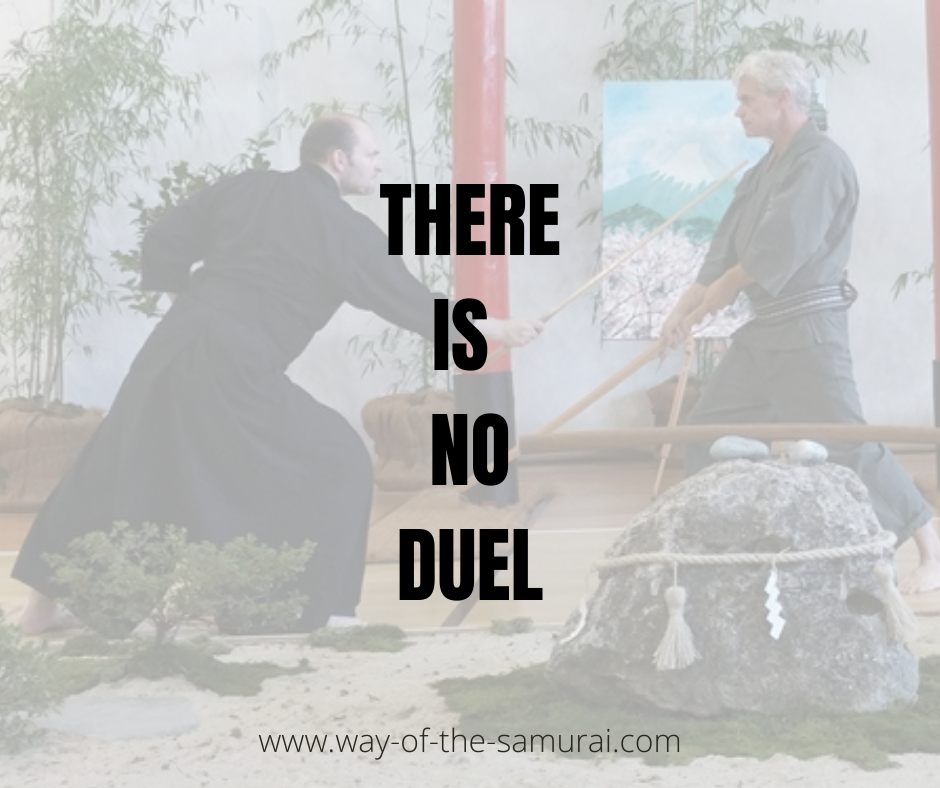
The Koryū 'I' practice are primarily not dueling systems.
There is no sword fight.
We are not standing 7 paces across from each other and competing in mortal combat. My opponent is sitting drinking tea and I've been ordered to kill him. He doesn't have a sword drawn. Heck, he may not even be armed. He's relaxed and unaware. And the first moment he realised he is in a fight is when my sword is in his body. Another technique would be to wait behind a corner as they walk by, and cut them down before they can register it. No time to draw a sword. No time to even orientate themselves to the attack. There are 100's of these methods. And from them 10,000 more. And nearly all of them model preemptive strikes with a lethal weapon offering no opportunity for resistance.
There.
Is.
No.
Duel.
If you are dealing with a resisting opponent then you've screwed up. (And yes, there are many kata devoted to..."and you screwed up and they are still alive").
Koryū is not sport. The paired waza are not representative of the outward appearance.The specific Koryū I practice are not dueling systems therefore a dueling practice, koryu sparring is of no benefit.
But least this devolve into an argument of the merits of kata over that of sparring I’d recommend checking out:
- Dr. Karl Friday's discussion of the topic in “Kabal in Motion” found in “Sword and Spirit; Classical Warrior Traditions of Japan Vol 2 edited by Diane Skoss. Koryū Books 1999.
- I’d also suggest reading Peter Boylan’s essay on the topic - http://budobum.blogspot.com/2013/11/kata-is-too-rigid-and-mechanical.html
- And Ellis Amdu’s excellent article - https://kogenbudo.org/pattern-drills-a-requisite-training-methodology-towards-combative-effectiveness/
I know, for many reading this explanation of Koryu Sparring you may be feeling disappointed with this revelation that swinging swords or sword like objects around to hit your friends isn't actually making you a real feudal warrior. And I'm not saying that isn't fun or a worthwhile activity. I'm saying it is not real violence and you do yourself a disservice if you think it is. If the progenitors of Koryu thought it would be useful for their arts they would have done it...as some do...but there are good reasons why most don't have "koryu sparring".
If you are still with me, join me for Part 5, the final part in this series as I explore the question of compatibility between HEMA and Koryu and give you some final conclusions and advice on what to do and where to go next.
- Home
- Martial Arts
- Koryu Sparring
You've been reading about Koryu Sparring - find out how the series concludes - here!
Click here to return to the Way of the Samurai Home Page.
Free Samurai E-books
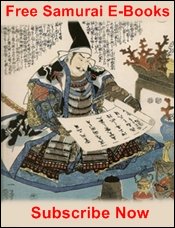
Get Free Exclusive Samurai Guides and E-books

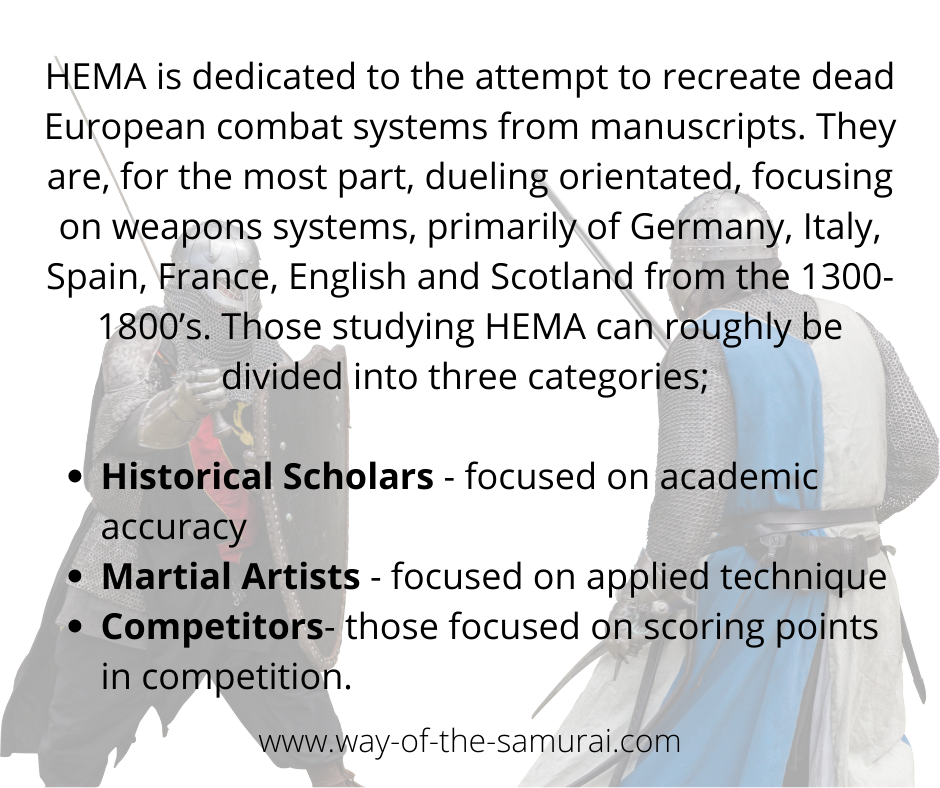
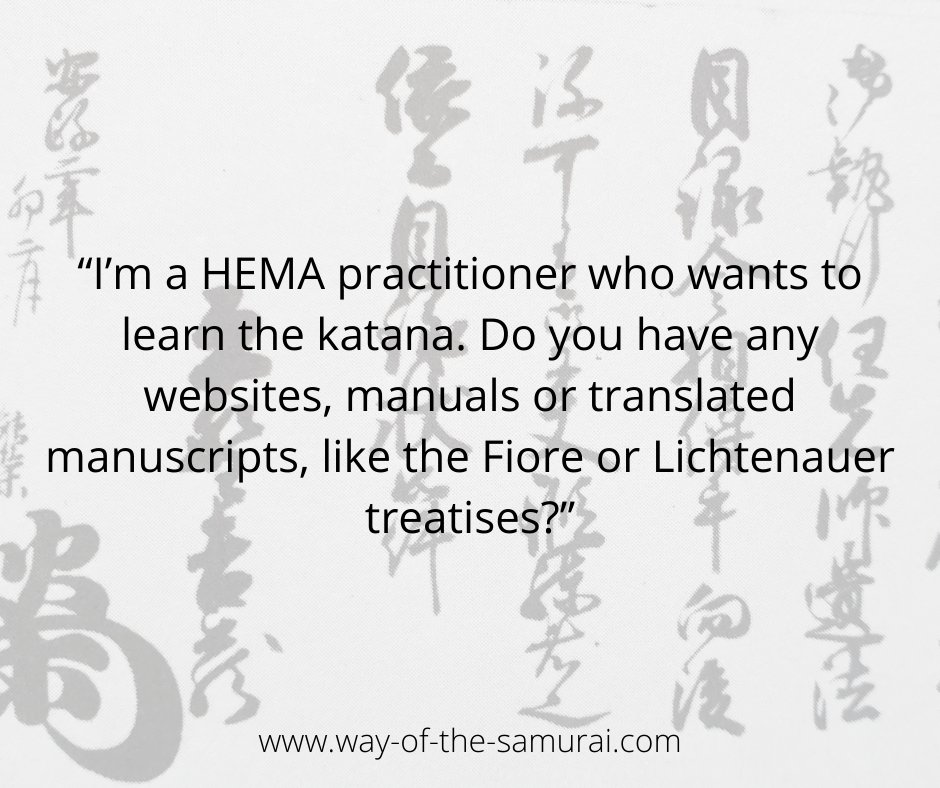
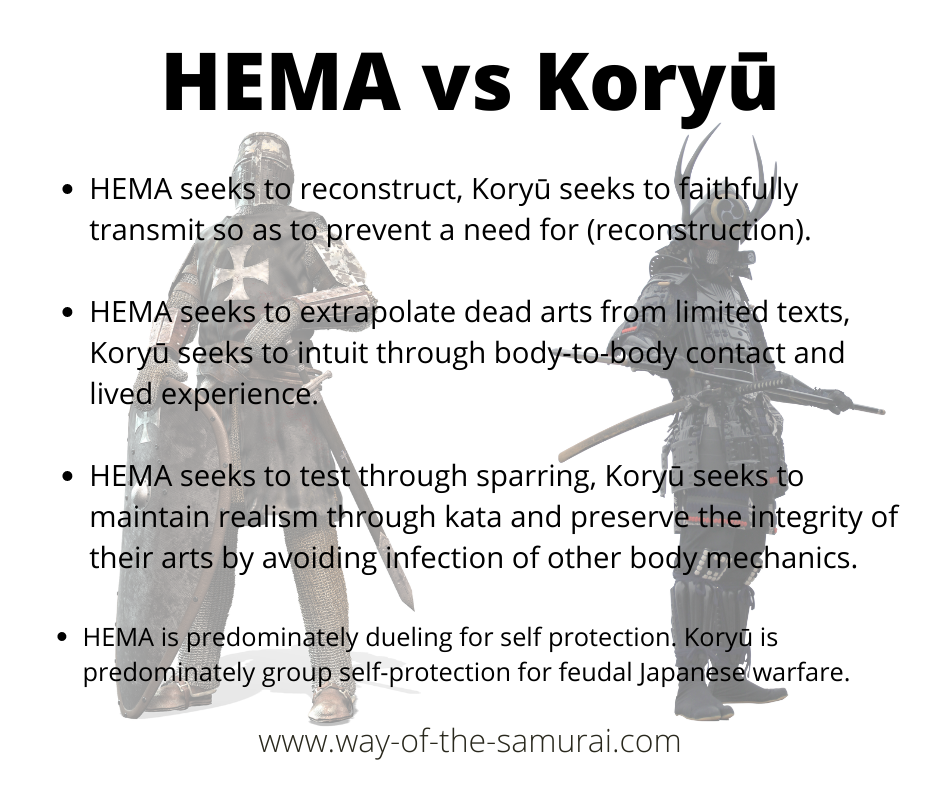




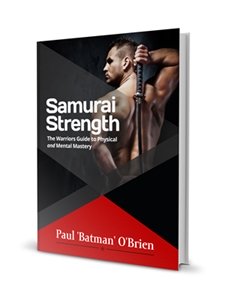
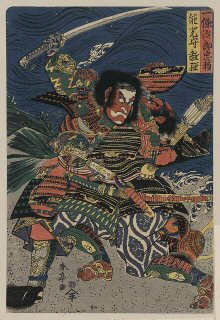
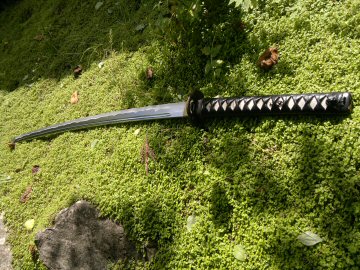
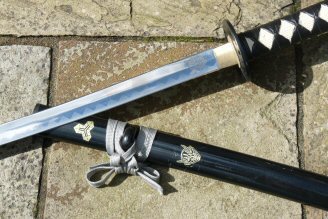
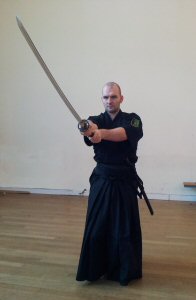
New! Comments
Have your say about what you just read! Leave me a comment in the box below.